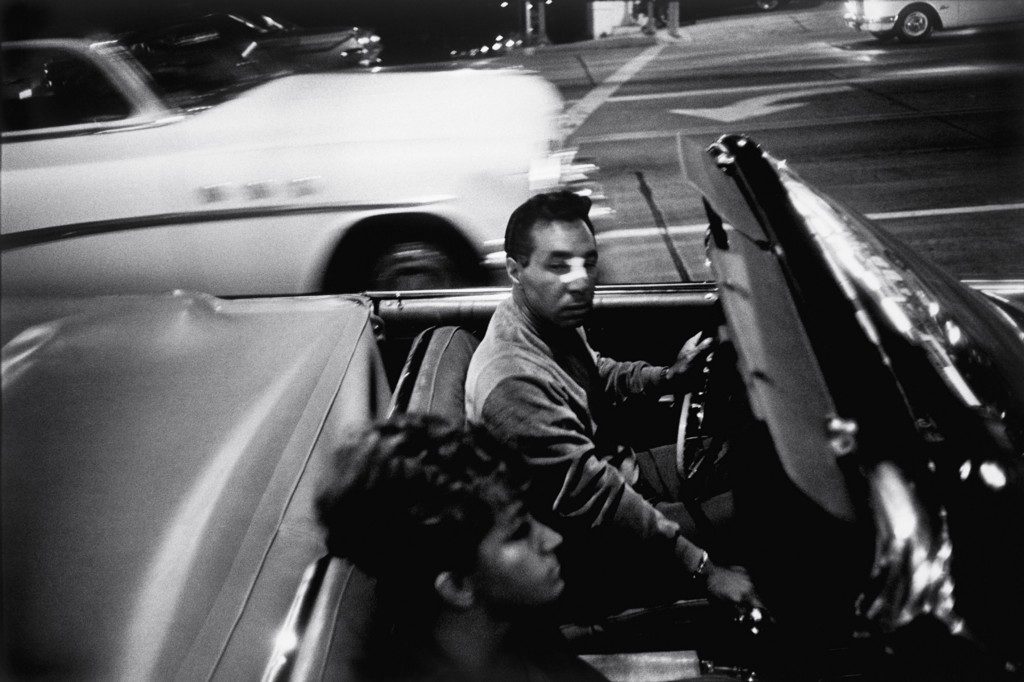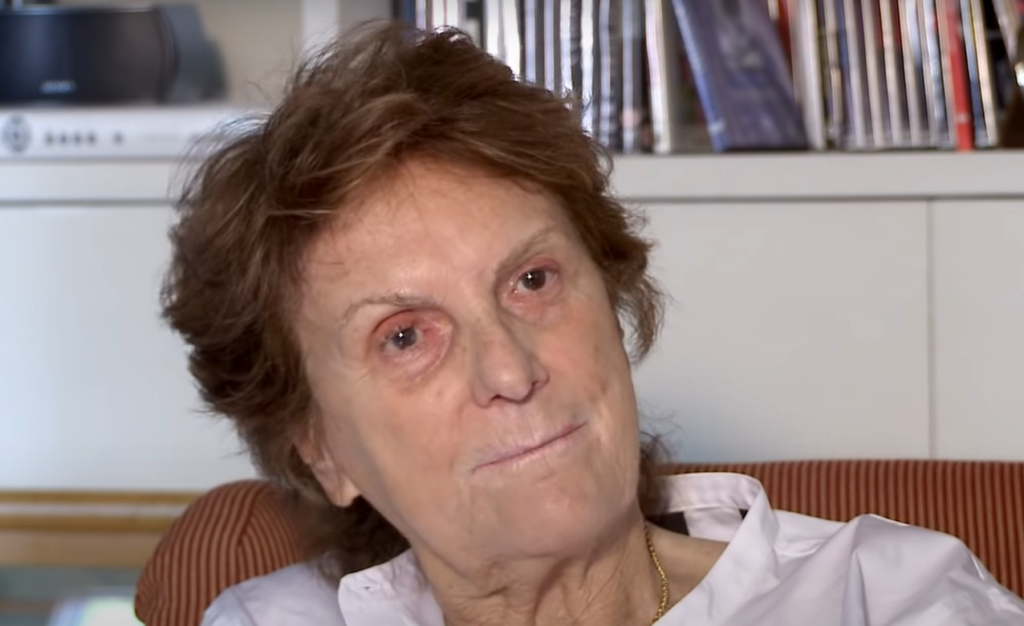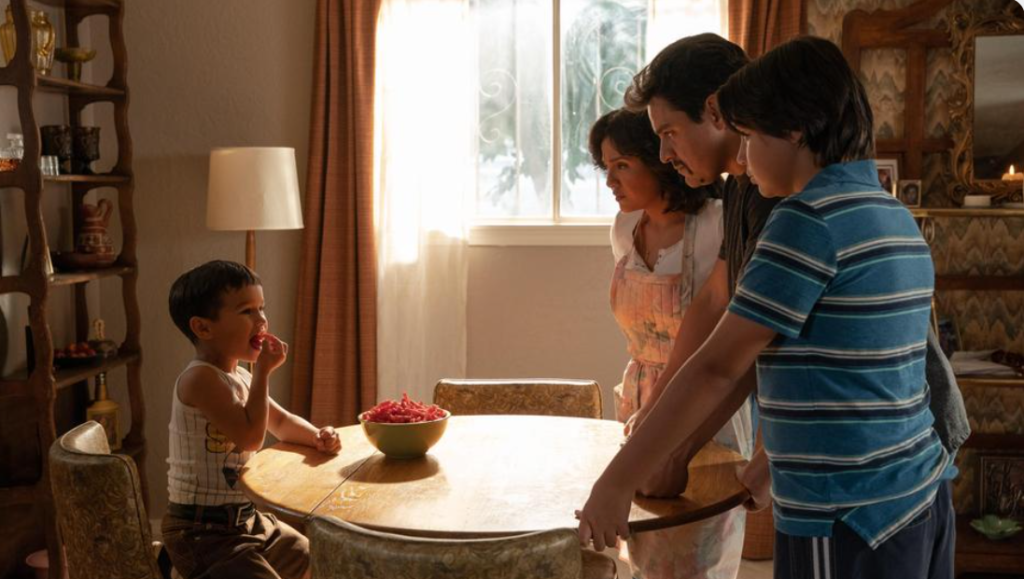SXSW 2018 Women Directors: Meet Sasha Waters Freyer — “Garry Winogrand: All Things Are Photographable”
Trained in photography and the documentary tradition, Sasha Waters Freyer fuses original and found footage in 16mm film and video. Her past documentary projects have screened at Telluride Film Festival, the Film Society of Lincoln Center, and the Rotterdam, among other fests and venues. Her work has also aired on international cable and public television. Her credits include “Burn Out the Day,” “Our Summer Made Her Light Escape,” and “This American Gothic.”
“Garry Winogrand: All Things Are Photographable” will premiere at the 2018 SXSW Film Festival on March 12.
W&H: Describe the film for us in your own words.
SWF: “Garry Winogrand: All Things are Photographable” is the first documentary to explore the life and work of one of the greatest photographers of the 20th century. Decades before digital technology transformed how we make and see pictures, Garry Winogrand made hundreds of thousands of them, creating an encyclopedic portrait of America in the process.
When he died suddenly at age 56 in 1984, Winogrand left behind more than 10,000 rolls of film — more than a quarter of a million pictures! These images capture a bygone era: the New York of “Mad Men,” the early years of the Women’s Movement, the birth of American suburbs, and the glamour and alienation of Hollywood. Forged by his own words and images, “Garry Winogrand: All Things are Photographable” is an intimate portrait of a man who both personified his era and transformed it.
W&H: What drew you to this story?
SWF: A new, comprehensive retrospective of Winogrand’s photography opened at the San Francisco Museum of Modern Art in 2013, and traveled to The Met in New York — which is where I saw it — as well as other venues. Seeing his work again — which had been so important to me as a college photo major — inspired me to wonder why there had never been a documentary about him.
In the film, San Francisco MoMA curator Erin O’Toole describes how Winogrand’s pictures “makes chaos visible.” I am attracted to his pursuit of that chaos, to the challenge of containing it within the four edges of a photographic frame.
Winogrand’s embrace of failure, and his radical commitment to seeing the world as it is, have something to teach us not only about art but also about being a person in the world. I think ultimately I made this film both because I wanted to dive deep into his work, and because I wanted to see a documentary about him that did not exist yet.
W&H: What do you want people to think about when they are leaving the theater?
SWF: This is a film primarily about photography, one that explores Garry Winogrand’s tremendous contributions to the art form, and his lasting influence on how we think of the medium today. But it is also a film that, I hope, explores and explodes the cliche of the undomesticated, self-destructive genius — one who is fundamentally unsuited to family life.
In considering Winogrand in all his multidimensional human complexity, I take aim at the “bad dad” and “bad husband” tropes in artist biography, seeking to undermine these as sources of triumph or artistic necessity.
Winogrand was an artist whose rise and fall — from the 1950s to the mid-1980s — in acclaim mirrors not only that of American power, and credibility, in the second half of the 20th century but also a vision of American masculinity whose limitations, toxicity, and inheritance we still struggle, culturally, to comprehend.
The film ultimately invites a deeper consideration of Winogrand not only as a “man of his time” — in the words of MoMA Photography curator, Susan Kismaric — but also as a man struggling to define himself simultaneously as an artist, and a parent, as so many of us do.
I hope people will think about art and how it helps us move through the world, but I also want people to reconsider notions of artistic “genius” and “sacrifice” as they relate to male artists in general, and to Winogrand in particular.
W&H: What was the biggest challenge in making the film?
SWF: My boring and predictable answer is: fundraising. In every other regard, the stars were aligned in the film’s favor. I was privileged to have a high degree of trust and generosity afforded me by the Winogrand estate, by his family and friends, and by the keepers of his archives.
My crew, especially D.P. Eddie Marritz, were true collaborators, and [production company] Submarine — who took a risk, and got involved in the film based on a two-minute trailer — pushed me in the best of all possible ways, watching rough cut after rough cut, to make the film as good as it could be. But fundraising was hard, and the film took five years from start to finish as a result.
W&H: How did you get your film funded? Share some insights into how you got the film made.
SWF: Seed funding from the National Endowment of the Arts allowed us to launch production. A successful crowdfunding campaign, followed by the involvement of PBS’ “American Masters,” got us to the finish line.
In addition to being the film’s producer and director, I am also the editor, and music supervisor, which are — for now — “deferred” costs, a privilege enabled by my day job at Virginia Commonwealth University.
W&H: What does it mean for you to have your film play at SXSW?
SWF: Garry Winogrand moved to Austin to accept a teaching position at the University of Texas in 1973 and stayed for five years before leaving for Los Angeles in 1978. His “larger than life” persona was felt on campus in the impact he had on his students, and across the city, where he photographed prolifically during those years.
It is thrilling to premiere the film at such a dynamic, art-loving festival that also has a strong personal connection to the film’s subject.
W&H: What’s the best and worst advice you’ve received?
SWF: Best advice: “The best you can hope for is that people say ‘no’ quickly” — I’m paraphrasing from memory a conversation around film funding with [Amazon producer] Ted Hope, from long ago in his Good Machine days.
Worst advice: In relation to my job as a film professor when I was first hired, “Don’t get pregnant until you have tenure.” Um, no. That’s not just bad advice, it is illegal advice.
W&H: What advice do you have for other female directors?
SWF: Trust your instincts. Surround yourself with, and support, kind, talented, hard-working people, especially other women. Avoid the haters. Don’t lose sight of things outside of your career goals that also matter, whether they be friends, family, or even personal passions,and hobbies — you will need these to sustain your faith in yourself, and your sense of joy when the career stuff stinks, as it inevitably will at some point.
Try not to care about “celebrity” — your own or anyone else’s — as it is fickle, precarious, and kind of pointless in the overall big picture.
Read lots of books.
W&H: Name your favorite woman-directed film and why.
SWF: Seeing “American Dream,” co-directed by Barbara Kopple and Cathy Caplan, in the theater inspired me to move away from photography — a passion in my early 20s — and towards documentary filmmaking. Barbara was also an important mentor, and the first filmmaker for whom I worked — as an intern on a doc about Mike Tyson.
Other more recent films on a list of favorites include Ava DuVernay’s “Selma,” Lena Dunham’s “Tiny Furniture,” and “Your Day is My Night” by Lynne Sachs, another great mentor and friend. “Your Day is My Night” will transform the way you think about immigrants in the city forever.
W&H: Hollywood and the global film industry are in the midst of undergoing a major transformation. Many women — and some men — in the industry are speaking publicly about their experiences being assaulted and harassed. What are your thoughts on the #TimesUp movement and the push for equality in the film business?
SWF: Time is up. Time was up a long time ago, meaning that this moment has been a long time coming, and I — like literally millions of women — am glad that it has finally arrived. I do not expect change to be easy or sudden but I think women — and many men, and non-binary-identifying persons too — are up for the long-term project of building a more inclusive, and therefore more relevant, filmmaking and film-viewing community.
We’ve earned a seat at the table in order to tell not just our own personal stories but also the stories of men, epic histories, utopias, and revolutions as well.
Image: Los Angeles, 1964 [man with bandaged nose in car]: Photographs by Garry Winogrand, Collection Center for Creative Photography, The University of Arizona. © The Estate of Garry Winogrand, courtesy of Fraenkel Gallery, San Francisco.







